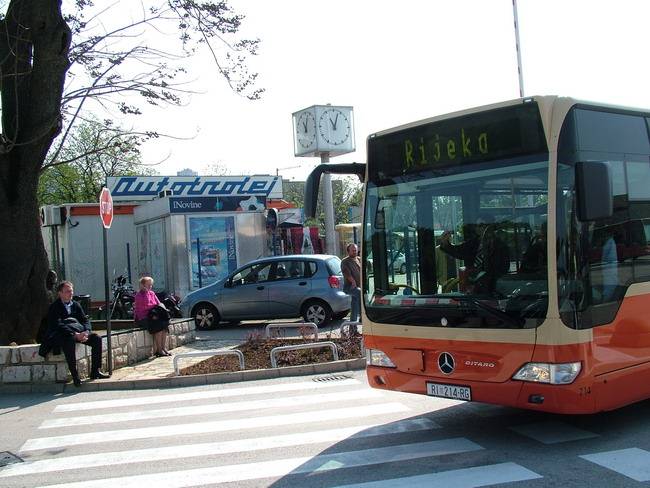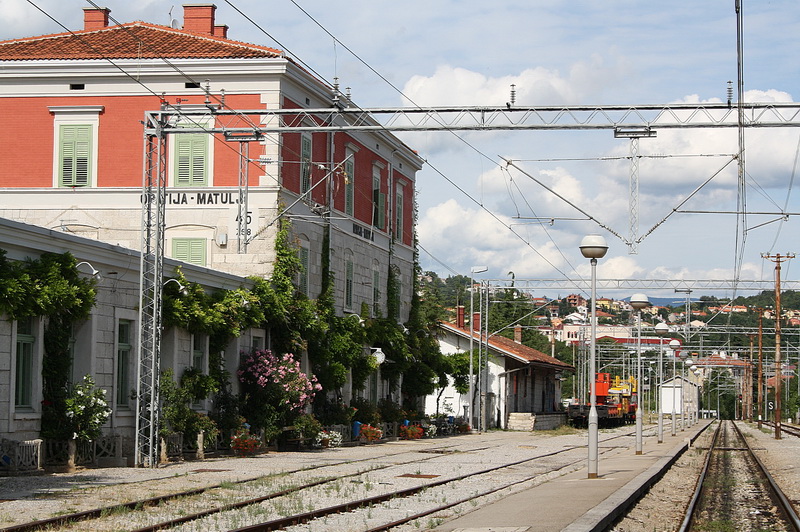FlixBus: More Than 70% Passengers Returned In 2021 From the Record 2019
September 10, 2021 - FlixBus, the leading bus carrier in international passenger transport in Croatia, recorded a strong increase in the number of passengers on all routes in the summer season of 2021, returning more than 70 percent of passengers from the record 2019.
HrTurizam reports that the German company Flixbus, a leader in the bus market that connects destinations within Croatia as well as the rest of Europe, has achieved very positive numbers and that they have little to envy a record season like that of 2019. FlixBus, as announced before the season, connected all international destinations that it connected in 2019, and in the period from June 1 to August 15, it carried 40 percent more passengers than in the same period in 2020.
The most pleasant surprise of the season were domestic passengers, who traveled within Croatia in almost the same number as in 2019. From other countries, most passengers were recorded from Germany, whose return is in line with the total figures, at a level higher than 70 percent from 2019. In the top 10 are Austrians, Slovenes, Italians, Hungarians, followed by travelers from Serbia, the Czech Republic, Bosnia and Herzegovina, Slovakia, and Switzerland.
From Italy, extremely affected by the pandemic, four times more passengers were recorded this year than in 2020. Despite stricter epidemiological measures for the entry of citizens from outside the European Union, and the severance of connections with Croatia in 2020, all tourists returned this season. Serbia with additional growth of 8 percent compared to the record 2019 when FlixBus connected Serbia and Croatia for the first time.
"The results of FlixBus during this year's summer season have once again confirmed that there is no successful tourism without quality transport connections. It is my great pleasure that as a company that brings together Croatian carriers, we have enabled a large number of foreign and domestic tourists to travel safely and comfortably on vacation, as well as to confirm the business justification of connecting all previous destinations, including those due to the 2020 pandemic. "It didn't work," said Ante Grbeša, director of the FlixBus CEE South region.
Unfortunately, in the year of recovery from a significant drop in traffic in international and domestic transport last year as a result of the coronavirus pandemic, some domestic carriers this year continued to use the option of keeping non-operating lines for epidemiological measures.
This resulted in poorer connectivity for passengers, while at the same time carriers such as FlixBus and other Croatian carriers were not allowed to introduce new routes and new destinations within Croatia that were in demand. This situation caused negative consequences for the freedom of market competition, and above all for the mobility of Croatian citizens, but also their guests in the middle of the tourist season.
The positive trend in passenger transport is due to strong growth in demand, especially since mid-July. In that sense, the decision of the MMPI on the application of the European Regulation on Internal Transport is certainly to be welcomed, according to Flixbus.
Thanks to their efforts and the application of the legal provisions of EU regulations that deal with the area of passenger transport within the EU, it is possible to purchase tickets and transport passengers between Croatian cities on international routes, which was previously prohibited. Such a possibility strengthens the connection of domestic destinations, offers more departure options for passengers and certainly better prices, and has a positive effect on the environment due to the greater efficiency of the bus, conclude Flixbus.
New lines announced
From September 15, FlixBus will introduce new European lines in addition to the existing ones, so it will be possible to reach Dalmatian cities via Split directly from Brussels and Hanover, while Zadar will be connected with Berlin and Maastricht. It will also be possible to travel to Zagreb from Antwerp and Amsterdam, and from Amsterdam, it will also be possible to travel directly from Slavonski Brod, which also connects with Frankfurt. The county will be connected with Antwerp and Bonn.
Since entering the domestic market in 2016, FlixBus, with its 12 local partners, more than 140 buses, and 700 drivers, has connected more than 250 destinations across Croatia and Europe and enabled direct travel to 12 countries, which has encouraged higher inflows and mobility tourist.
For more information on bus travel in Croatia, take a look at the Total Croatia page.
For more, make sure to check out our dedicated travel section.
Passenger Transport 31% Down, Transport of Goods 4.5% Down in Q1
ZAGREB, 20 May 2021 - A total of 11.3 million passengers were transported in Croatia by all means of transport in the first three months of 2021, which is around 5.2 million fewer passengers or a 31.4% drop from the same period of 2020, while the transport of commodities dropped by 4.5% to close to 28 million tonnes.
According to preliminary figures released by the national statistical office, in Q1 the most passengers, 7 million, were transported by bus, a drop of 32% compared to Q1 2020.
As for the transport of goods, 18 million of the 28 million tonnes of commodities were transported by road, a 7.4% drop from Q1 2020.
Goods were also transported by ship, with 4.2 million tonnes of commodities transported that way, which is as much as 12% more than in Q1 2020.
Three and a half million tonnes of goods were transported by rail, 3.6% down from Q1 2020, while transport via inland waterways saw a drop of 17% compared to Q1 2020, to 948,000 tonnes.
Around two million tonnes of goods were transported by pipelines.
As for air transport, 298 tonnes of goods were transported by plane in Q1 2021, a 41% drop from the same period as last year.
For more about business in Croatia, follow TCN's dedicated page.
Kvarner Goes Green: Opatija and Rijeka Integrated Rail and Bus
January 7, 2021 – From the Bay of Bakar through the beaches of Rijeka to the opulence of Opatija and up, all the way to the border with Slovenia, Kvarner residents and visitors will be able to travel with just one ticket across the whole of the Rijeka integrated rail and bus network
An existing co-operation between rail and bus operators in Kvarner was today extended, allowing the Rijeka Integrated Rail and Bus network to continue for at least another year. This holds exciting implications for travel in the region for years to come.
Planned changes to the infrastructure of the coastal part of the north Kvarner Bay mean that within the Rijeka integrated rail and bus scheme, you will soon be able to travel from the Bay of Bakar, stop off at a series of Rijeka beaches, hop back on public transport to go to Opatija and even travel beyond the coast, all the way to the border with Slovenia, using just one ticket. Passengers will not be limited in their choice to travel by either aril or bus.
An Autotrolej bus, longtime providers of local bus services in Rijeka © Grad Rijeka
The Rijeka integrated rail and bus scheme, organised through Kvarner County, Rijeka, Matulji and Bakar Town Halls, rail and local bus operators is an eco-friendly drive that seeks to encourage people to leave their cars at home and instead choose public transport. However, access to the Rijeka integrated rail and bus network is not limited to commuting workers and travelling students. Although the scheme is most cost-effective using a monthly ticket, day tickets are available for the network which may be of huge appeal to visitors wishing to explore a wider portion of Kvarner's northern coast.
The train station of Opatija Matulji © Damir Covic 1939 / Matulji Tourist Board
Rijeka integrated rail and bus: International
What makes the extension of the Rijeka integrated rail and bus scheme even more welcome is the planned overhaul of infrastructure that will accompany it.
Fifteen extra stations will be added (or reactivated) on the route between Kantrida in the west of Rijeka, along the Rijeka seafront and on to the outskirts of Bakar. Furthermore, the entire train line from Bakar to Šapjane will be brought into the Rijeka integrated rail and bus scheme with the completion of a second train track along the route. Trains along the line at Šapjane. Next stop Slovenia! © DiningCar_
Trains along the line at Šapjane. Next stop Slovenia! © DiningCar_
Šapjane, in the municipality of Matulji, lies 20 kilometres inland, north of Opatija. It sits right on the border with Slovenia. The train line extends across this border, through the Slovenian town of Ilirska Bistrica, and then on to Postojna and Ljubljana, Italy or Austria. This means the Rijeka integrated rail and bus scheme will be directly linked to another green, international travel network.
These routes will all be linked to the incoming, double-tracked Pan-European fast train network, which, as TCN highlighted last year, will connect this part of Kvarner with France, Spain and Portugal in the west all the way to eastern Hungary via Zagreb and Budapest. Needless to say, it will require more than a single day ticket (cvikalica) from the Rijeka integrated rail and bus network to make such a journey!
New Modern Buses for Croatia! Free WiFi, USB Ports and More
Need a ride?
Buses in Croatia: 5 Tips for an All-Nighter Trip
she took the midnight train
going anywhere
Autotrans Celebrates 70 Years in Croatia with Discounts and Special Offers
Autotrans is celebrating 70 years with full devotion to their customers.


